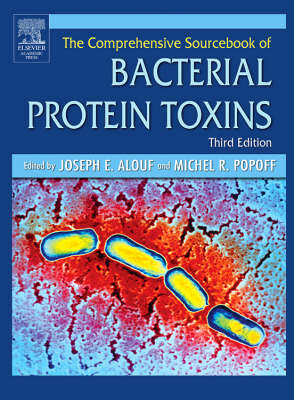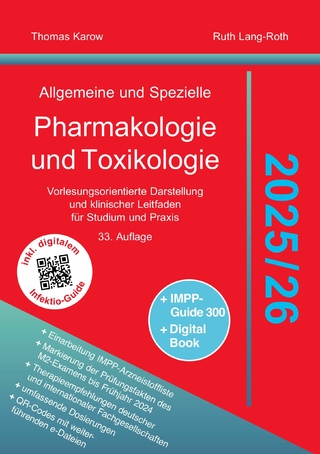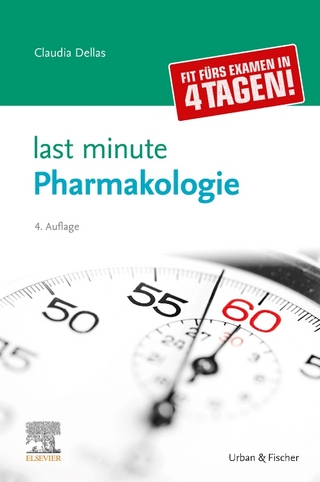
The Comprehensive Sourcebook of Bacterial Protein Toxins
Academic Press Inc (Verlag)
978-0-12-088445-2 (ISBN)
- Titel erscheint in neuer Auflage
- Artikel merken
This book describes the major achievements and discoveries relevant to bacterial protein toxins since the turn of the new century illustrated by the discovery of more than fifty novel toxins (many of them identified through genome screening). The establishment of the three-dimensional crystal structure of more than 20 toxins during the same period offers deeper knowledge of structure-activity relationships and provides a framework to understand how toxins recognize receptors, penetrate membranes and interact with and modify intracellular substrates.
Joseph E. Alouf is Professor of Microbiology at the Pasteur Institute of Lille. He is former Head of the Department of Bacteriology and Mycology at the Pasteur Institute at Paris and Chairman of its Scientific Council. He served as Secretary General of the French Society of Immunology from 1984-1986 and President of the Federation of the European Microbiological Societies from 1989-1992. His 40-year research work relates to the field of bacterial protein toxins and immunology of infectious diseases. He is also the co-editor of several books. Daniel Ladant is Director of Research at French CNRS (National Center for Scientific Research) and head of the “Biochemistry of Macromolecular Interactions unit at Institut Pasteur, Paris, France. He obtained a Ph.D. in Microbiology in 1989 and a « Habilitation à Diriger des Recherches » (HDR), in 1999 from the Université Paris Diderot, Paris, France. His research has been mainly focused on the study of the molecular mechanisms that underlie protein-protein and protein-membrane interactions, using as a model system a bacterial toxin, the adenylate cyclase (CyaA) produced by Bordetella pertussis, the causative agent of whooping cough. CyaA is an essential virulence factor from B. pertussis, and belongs to the large family of RTX (Repeat in ToXins) cytolysins produced by diverse Gram-negative bacteria. By combining molecular genetics, biochemical and biophysical approaches, he has characterized the structure, function and biogenesis of the CyaA toxin, with a particular emphasis on deciphering the molecular basis of its original entry pathway that involves a direct translocation of its catalytic domain across the plasma membrane. Basic knowledge gained on the mechanisms of CyaA entry into eukaryotic target cells and its interaction with cellular effectors has been used to develop various applications in vaccinology and biotechnology. In particular, the natural property of the CyaA toxin to target immune cells has been exploited to create innovative vaccines capable of stimulating potent cell-mediated immune responses against specific antigens. Two CyaA-based recombinant vaccines are currently evaluated in clinical trials. D. Ladant also designed a CyaA-based two-hybrid (BACTH) technology that has been exploited for studying, in bacteria, the assembly of protein complexes, and particularly to analyze membrane associated machineries such as bacterial secretion systems or the bacterial cell division apparatus. His other research interests include the other class II bacterial adenylate cyclase toxins, such as Edema Factor (EF) from Bacillus anthracis and ExoY toxin from Pseudomonas aeruginosa, in particular to explore of the allosteric mechanisms implicated in the activation of these enzymes by eukaryotic factors. He has published more than 90 articles in peer-reviewed journals, 20 review articles or Book chapters and co-authored 11 patents. Michel R. Popoff, D.V.M., Ph.D. (Microbiology) from the University of Paris (1985), Habilitation à Diriger des Recherches (HDR) from the University of Paris (1990), is the Head of the Anaerobic Bacteria and Toxins Unit and the Director of the National Reference Center for Anaerobic Bacteria and Botulism at Pasteur Institute, Paris, France. He is member of the French Veterinary Academy. His laboratory is focused on Clostridium toxins through genetic and biological activity analysis and has investigated the regulation of toxin synthesis in Clostridium botulinum and Clostridium tetani. In the recent years, we have analyzed the molecular mechanism of the actin depolymerizing C. sordellii lethal toxin and clostridial binary toxins, the pore-forming C. perfringens epsilon toxin, and the passage of botulinum neurotoxin through the intestinal barrier. He was co-editor of the 3° edition of the Sourcebook of Bacterial Protein Toxins Academic Press (2006).
Introduction
A 116-year story of bacterial protein toxins (1888-2004): From 'diphtheritic poison' to molecular toxinology
Evolutionary aspects of toxin-producing bacteria
Mobile genetic elements and pathogenicity islands encoding bacterial toxins
Regulation systems of toxin expression
Toxin secretion systems
Intracellular trafficking of bacterial protein toxins
Translocation of bacterial protein toxin into the cytosol
Bacterial toxins and virulence factors targeting the actin cytoskeleton and intracellular junctions
Bacterial toxins and mitochondria
Toxins activating RHO GTPases and exploiting the cellular ubiquitin/proteasome machineries
Toxin receptors
Molecular, functional and evolutionary aspects of ADP-ribosylating toxins
Diphtheria toxin
Attack of the nervous system by clostridial toxins: Physical findings, cellular and molecular actions
Uptake and transport of clostridial neurotoxins
Bacillus anthracis toxins
Large clostridial cytotoxins modifying small GTPases
Bordetella protein toxins
Vibrio Cholerae and Escherichia Coli thermolabile enterotoxin
The Shiga toxins: Properties and action on cells
Helicobacter pylori vacuolating toxin
Pasteurella multocida toxin
Cytolethal distending toxins
Pseudomonas aeruginosa toxins
Escherichia coli heat- stable enterotoxin b
Paradigms and classification of bacterial membrane -damaging toxins
Membrane damaging and cytotoxic phospholipases
Bacteroides fragilis toxins
Structure and mode of action of RTX cytolysins
Genetics and phylogeny of RTX cytolysins
The family of two-component cytolysins of Serratia and other bacteria
Alpha-helix and Beta-barrel pore-forming toxins (leucocidins, alpha-, gamma- and delta-cytolysins) of Staphylococcus aureus
Aerolysin and related Aeromonas toxins
Clostridium septicum pore-forming alpha-toxin
Clostridium perfringens epsilon toxin
Repertoire and general features of the family of cholesterol–dependent cytolysins
Comparative three-dimensional structure of cholesterol-dependent cytolysins
Perfringolysin O and Intermedilysin: mechanisms of pore formation by the cholesterol-dependent cytolysins
Pneumolysin: structure, function and role in disease
Listeriolysin
Enterococcus faecalis cytolysin toxin
Streptolysin S: one of the most potent and elusive of all bacterial toxins
The group B streptococcal beta-haemolysin/cytolysin
Haemolysins of Vibrio cholerae and other Vibrio species
Clostridium perfringens enterotoxin
Bacillus cereus enterotoxins, bi- and tri-component cytolysins and other haemolysins
Uropathogenic Escherichia coli cytolysins
Escherichia coli, Vibrio and Yersinia species heat-stable enterotoxins
What are superantigens ?
Staphylococcal superantigens and the diseases they cause
Streptococcal superantigenic toxins
Superantigenic toxin of Yersinia pseudotuberculosis
Comparative three-dimensional structure of bacterial superantigenic toxins
Induction and modulation of inflammatory networks by bacterial protein toxins
Clostridial toxins in the pathogenesis of gas gangrene
Staphylococcal exfoliative toxins
Medical applications of botulinum neurotoxins
Bacterial protein toxins as food poisons
Engineering of bacterial toxins for research and medicine
Engineered bacterial toxin vaccines and adjuvants
Toxins as tools
Bacterial protein toxins as biological weapons
INDEX
| Erscheint lt. Verlag | 20.12.2005 |
|---|---|
| Verlagsort | San Diego |
| Sprache | englisch |
| Maße | 216 x 279 mm |
| Gewicht | 2640 g |
| Themenwelt | Studium ► 2. Studienabschnitt (Klinik) ► Pharmakologie / Toxikologie |
| Naturwissenschaften ► Biologie ► Biochemie | |
| ISBN-10 | 0-12-088445-3 / 0120884453 |
| ISBN-13 | 978-0-12-088445-2 / 9780120884452 |
| Zustand | Neuware |
| Informationen gemäß Produktsicherheitsverordnung (GPSR) | |
| Haben Sie eine Frage zum Produkt? |
aus dem Bereich



